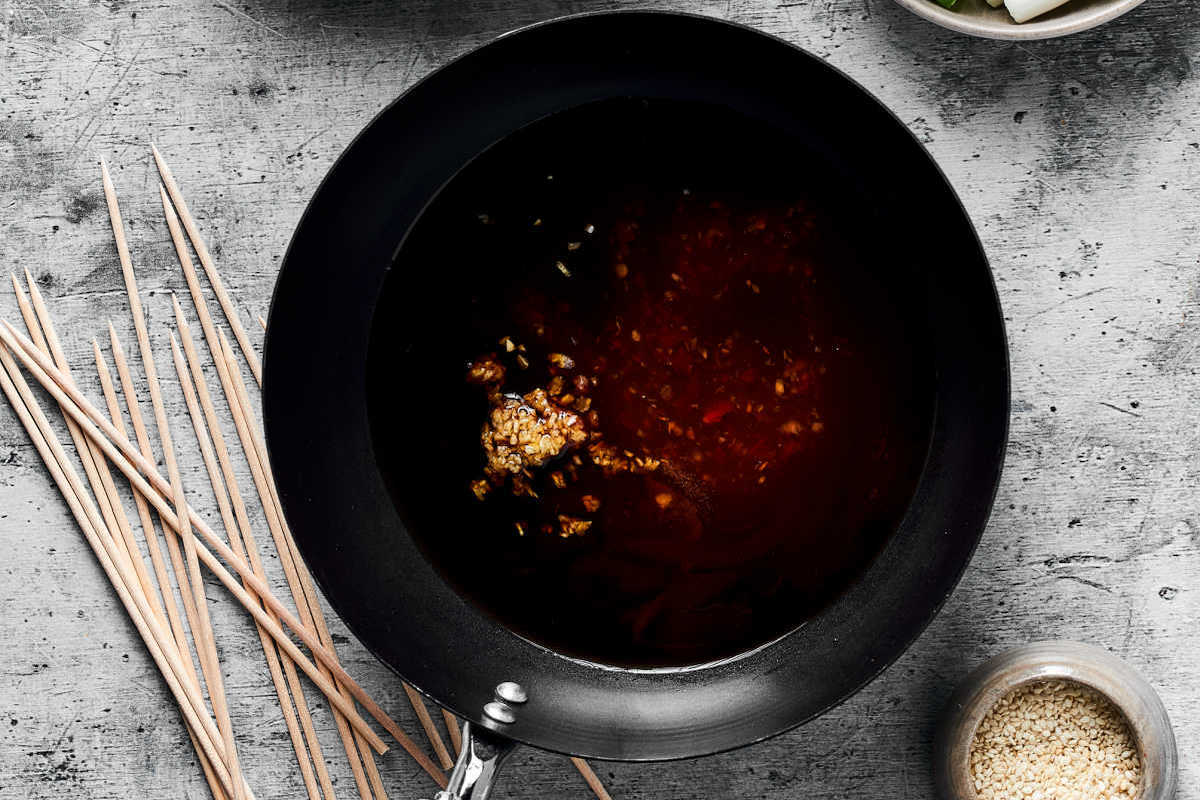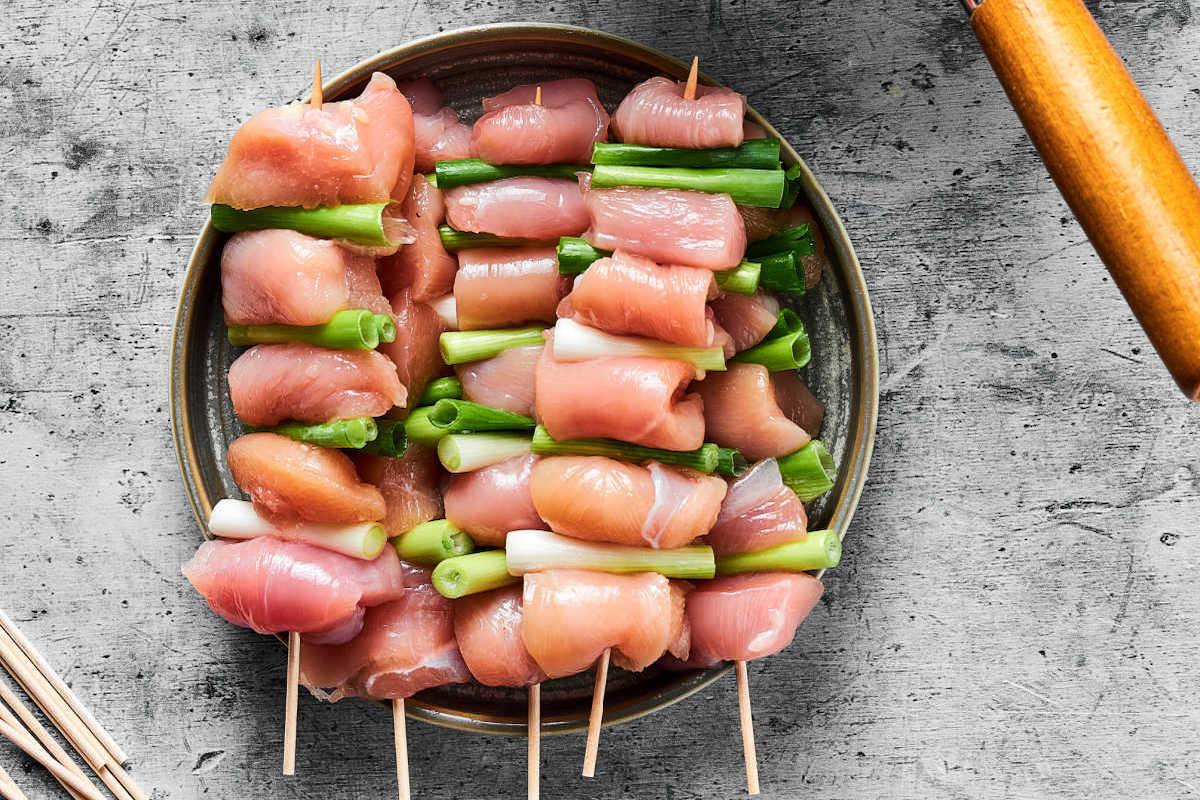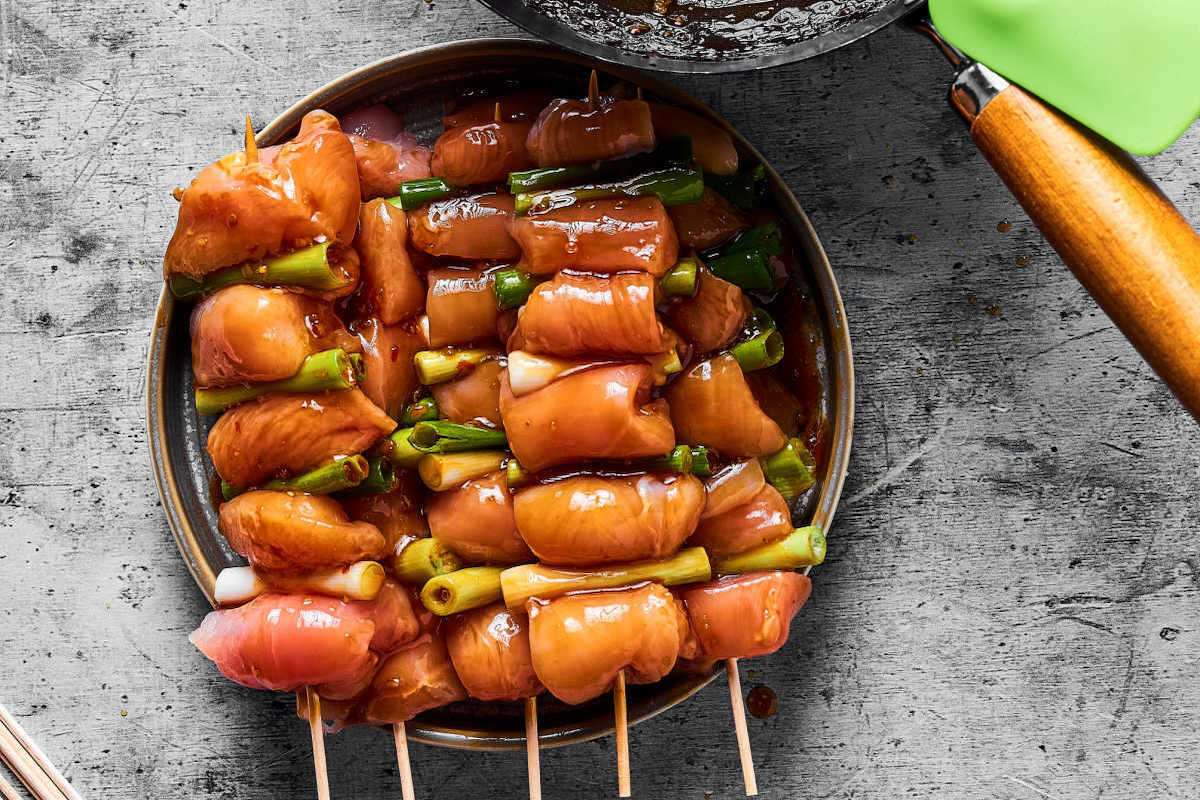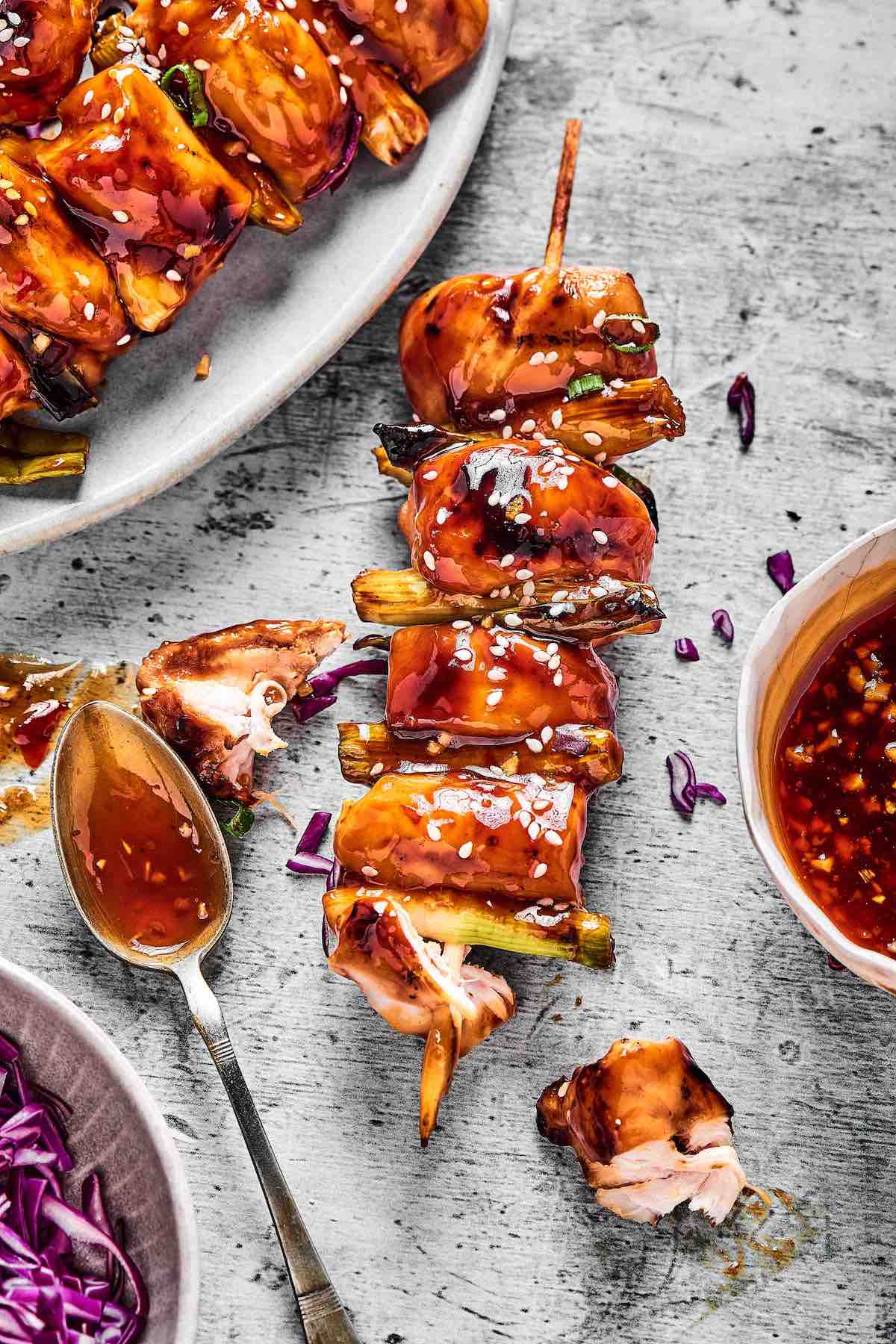Love cooking Japanese food at home? Try my chicken katsu, beef negimaki, mochi donuts, and kani salad next. Chicken yakitori was my go-to appetizer every time my family and I would get Japanese food. Ever since I discovered how easy it is to make at home, I’ve become a bit obsessed.
Why I love this recipe
Common ingredients. Even though this is a popular Japanese dish, it uses very basic ingredients. Grill and oven options. I prefer the traditional grilling method, but I tested this recipe with the oven as well. Versatile. Like my chicken satay, this dish makes an easy appetizer, though it works just as well as the main course at dinner.
Ingredients needed
Chicken. Chicken thighs can also be used, but I prefer the texture of chicken breasts, and since we’re adding a sauce, the chicken breasts won’t dry out. Green onion. To grill with the chicken. Oil. Just enough for grilling. Sesame seeds. For garnish.
For the yakitori sauce: Yakitori, also known as negima yakitori, is one of Japan’s most popular yet underrated dishes. “Yaki” translates to “grilled,” and “tori” means “chicken” or “bird.” It’s usually composed of bite-sized chicken pieces skewered and grilled with a simple sauce known as “tare.”
Soy sauce. Use gluten-free tamari if needed. Mirin. Also known as Japanese cooking wine. I can find it at almost every mainstream grocery store nowadays, but if you can’t, dry sherry or sake will also work. If you don’t want to cook with alcohol, substitute white vinegar and a dash of sugar for the cooking wine or use rice vinegar. Sugar. Just a dash will even out the other ingredients. I used regular white sugar, but brown sugar works.
How to make chicken yakitori
I’ve included step-by-step photos below to make this recipe easy to follow at home. For the full printable recipe instructions and ingredient quantities, scroll to the recipe card at the bottom of this post.
Arman’s recipe tips
Always soak the skewers. Trust me, this is NOT negotiable! If the skewers aren’t soaked in water, they’ll burn on the grill. If you don’t want to soak skewers, invest in a pair of stainless steel skewers instead. Make sure there’s no space between the chicken and green onions, or else the skewers burn. Keep an eye on them. I can say from experience it’s easy to burn chicken skewers, so stay close by and continue flipping often until the chicken is fully cooked. Marinate for longer. The beauty of this recipe is that the chicken can be marinated in advance, up to 2 days, and kept in the fridge until you’re ready to grill. Cut the chicken into bite-sized pieces. So they cook evenly. Use other cuts of chicken. Yakitori can be made with any cut of chicken. This includes chicken livers, gizzards, hearts, you name it! So feel free to get creative and try something new.
Storage instructions
To store: Leftover yakitori should be stored in an airtight container and kept in the refrigerator for up to one week. As much as I love breaking out the grill, I understand it’s not a year-round piece of technology. Luckily, I tested this recipe using the broiler setting of my oven, and it turned out perfect. To broil, prep the chicken and skewer as instructed. Place the skewers on a wire rack beneath a baking sheet lined with foil. Broil the skewers on one side for 4-5 minutes, then carefully remove them from the oven, flip them, and broil for another 4-5 minutes or until the chicken is fully cooked. Yakitori is a type of Japanese street food that doesn’t need much to taste great. If I’m serving it as an appetizer, I’ll put the skewers on a bed of salad greens with extra sauce for dipping. Otherwise, I’ll serve it with basmati rice and Asian cucumber salad or an asparagus stir fry. To freeze: Let your leftovers cool completely, then remove the chicken and green onions from the skewers, store them in a freezer-safe container, and freeze them for up to 3 months. Let the chicken thaw overnight in the fridge or add more reheating time. To reheat: Reheat leftovers in an oven at 300F or in the microwave until warm.
Frequently asked questions
More Japanese favorites
Pork katsu Eel sauce Beef katsu Unagi
Originally published October 2022, updated and republished July 2024






